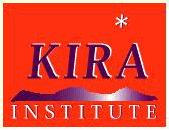

|
Exploration: Merleau Ponty
|
I am taking this text from "Eye and Mind" in the older translation by Carleton Dallery. There is a newer and excellent translation iby Michael B. Smith in Galen A. Johnson, ed., The Merleau-Ponty Aesthetics Reader. I am not using this one because I have enough heavy books to lug to my office as it is. For those who read French, the original text is in L'Oeil et l'Esprit (Paris: Gallimard, 1962).
These are just two short passages from a very rich phenomenology of vision, specifically as interrogated by the painter, (and also in contrast to Descartes's construction of vision in the Optics), in which Merleau-Ponty comments on the reversal of roles between seer and seen, the seer's immersion in the fabric of the visible, and the displacements from specifications such as those of place, or temporal sequence, along with the subject/object division, that allow the visible to be truly what it is.
. . . The painter lives in fascination. The actions most proper to him -- those gestures, those paths which he alone can trace and which will be revelations to others (because the others do not lack what he lacks or in the same way) -- to him they seem to emanate from the things themselves, like the patterns of the constellations. Inevitably the roles between him and the visible are reversed. That is why so many painters have said that things look at them. As André Marchand says after Klee: "In a forest I have felt many times that it was not I who looked at the forest Some days I have felt that the trees were looking at me, were speaking to me . . . I was there, listening. . . I think that the painter must want to be penetrated by the universe and not want to penetrate it. . .I expect to be inwardly submerged, buried. Perhaps I paint to break out."
[A later passage:]
"When through the water's thickness I see the tiling at the bottom of the pool, I do not see it despite the water and the reflections there. I see it through them and because of them. If there were no distortions, no ripples of sunlight, if it were without this flesh that I saw the geometry of the tiles, then I would cease to see it as it is and where it is -- which is to say, beyond any identical, specific place. I cannot say that the water itself--the aqueous power, the syrupy and shimmering element --is in space; all this is not somewhere else either; but it is not in the pool. It inhabits it, it materializes itself there; yet it is not contained there; and if I raise my eyes toward the screen of cypresses where the web of reflections is playing,, I cannot gainsay the fact that the water visits it too, or at least sends into it, upon it, its active and living essence. This internal animation, this radiation of the visible is what the painter seeks under the names of depth, of space of color.
-- VF - 18 Mar 2005
Dear VF,
What a wonderfully apt quotations, beautiful in themselves, and also fitting very well in our conversations.
It would be great to have links between my book manuscript and the first quotation, about painters describing how things look at them. I was not aware of such direct examples of the subject/object reversal in reports from painters, although it does strike me as very natural.
VF, if you are interested in writing a general piece as comment on my Life as a Lab manuscript and/or a separate essay about your views of that whole topic, we could then place that on the official kira.lab.org site, and link it with the book manuscript.
-- PietHut - 19 Mar 2005

Back to Explorations.